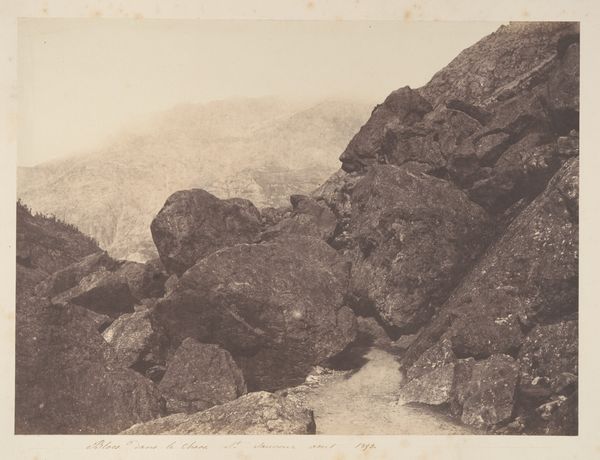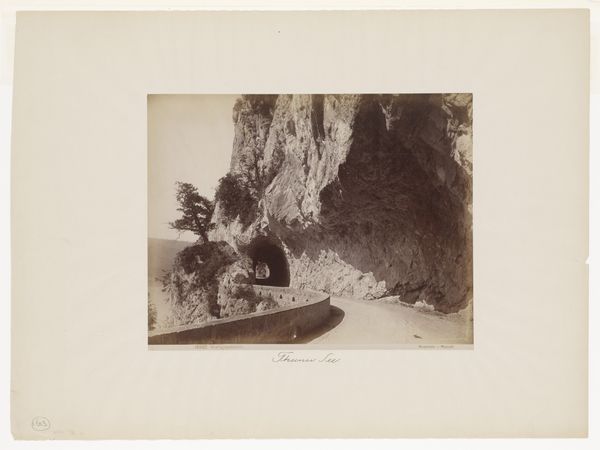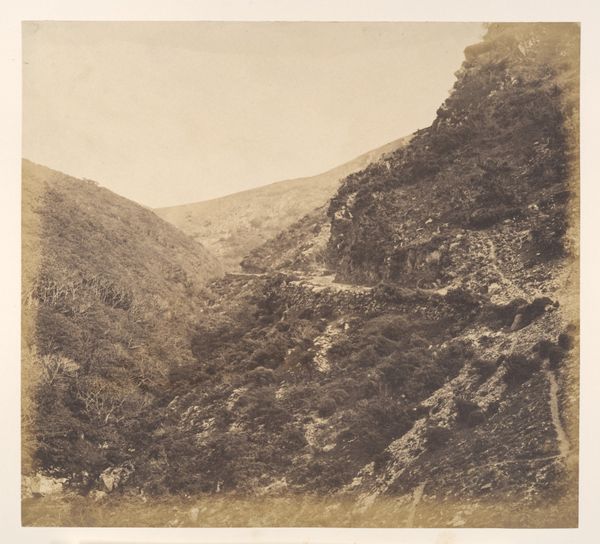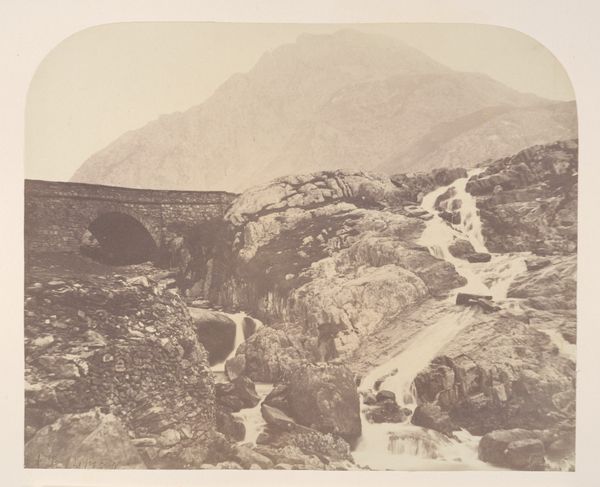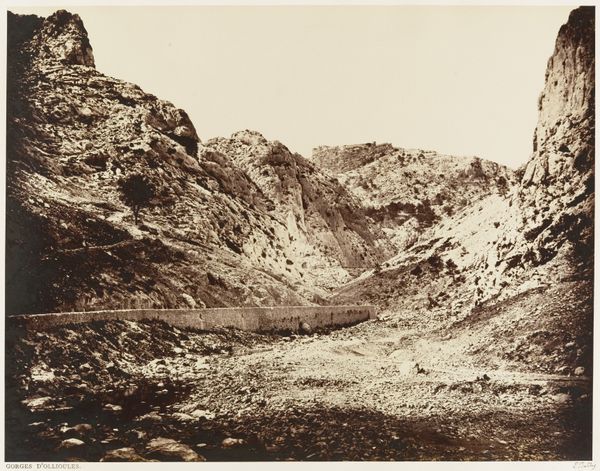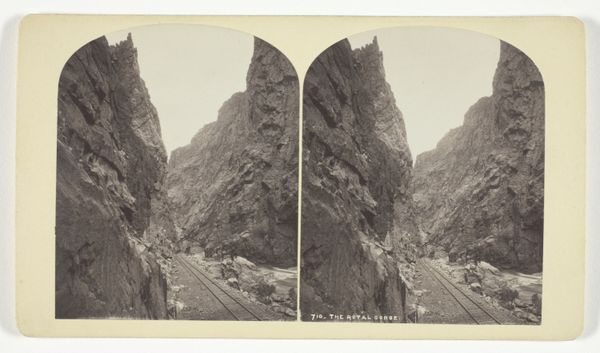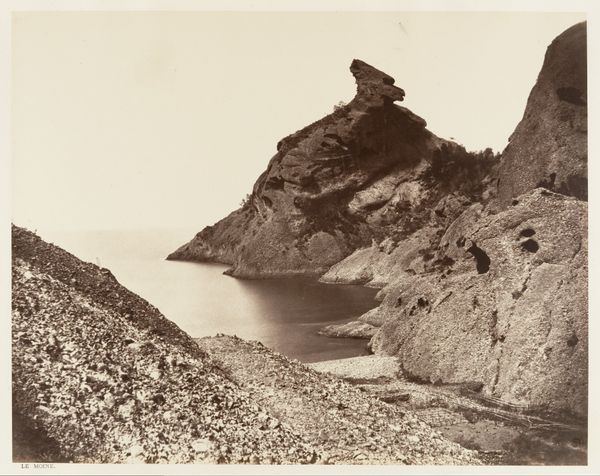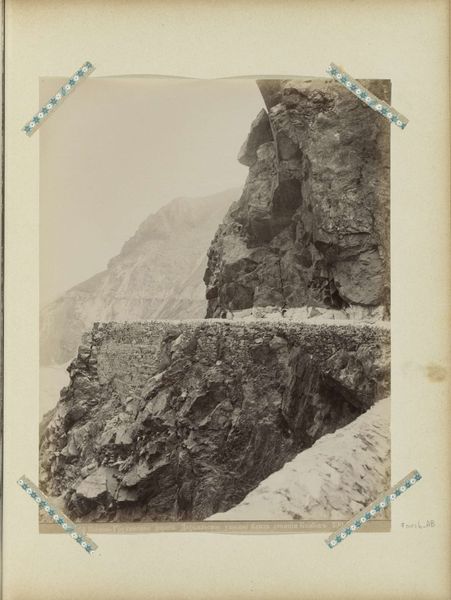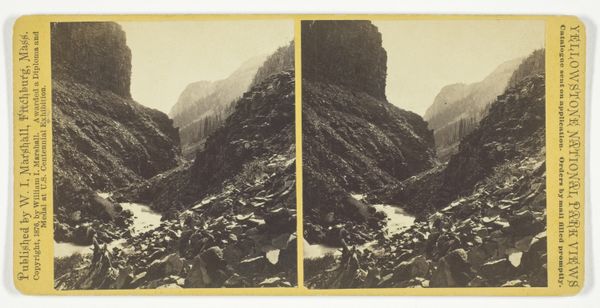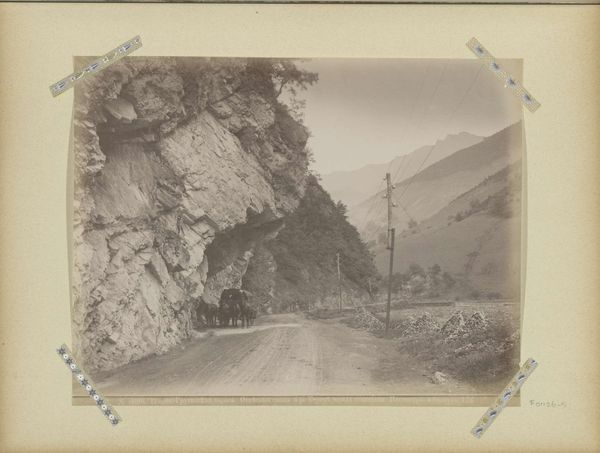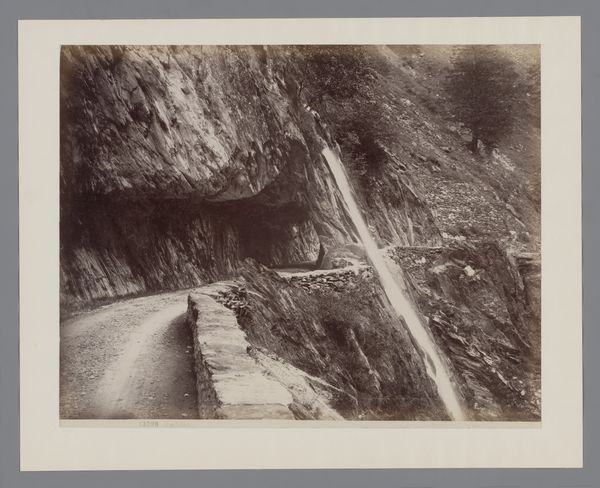
photography
#
landscape
#
photography
#
mountain
#
realism
Dimensions: Image: 9 13/16 × 14 1/2 in. (24.9 × 36.9 cm) Sheet: 12 in. × 18 9/16 in. (30.5 × 47.2 cm)
Copyright: Public Domain
Editor: This is "Sentier du chaos, St-Sauveur" taken by Joseph Vigier in 1853. It’s a photograph that gives me the impression of monumental stillness; everything is rock and a very muted palette. What historical perspective can you share about this image? Curator: Well, this photograph really speaks to the rise of landscape photography as a means of documenting and, frankly, conquering nature in the 19th century. Think about it: 1853 places this work right in the heart of European expansion and industrial revolution. How do you think photography, as a relatively new medium at the time, influenced perceptions of the natural world? Editor: That’s interesting. I suppose that seeing such stark, seemingly objective depictions of landscapes like this might have fueled a sense of human dominance. Like, we can capture and control even the most chaotic environments through technology? Curator: Exactly. And think about the 'chaos' mentioned in the title itself. Was it seen as something to admire or something to tame? Also, consider the burgeoning tourism industry at this time. Images like this weren't just scientific documents, they were also selling an experience, a carefully curated vision of nature. Were the masses able to visit such remote sites at that time, and do you think photos like this encouraged them to do so? Editor: Good question. I imagine they did. I never really considered how photography influenced tourism at the time, by creating this view for an adventurous population. Curator: Right. And this image, seemingly just a depiction of a path, speaks volumes about the relationship between man, technology, and the natural world during a period of immense societal shift. How powerful, for example, could photography be used as documentation that aided the expansionist attitudes that began during this time? Editor: It makes you wonder what narratives get created through the selection of imagery. This perspective gives the scene such depth, it really inspires me to ask even more questions! Curator: Absolutely. Art, after all, often shows not just what *is*, but what *could be*, or *should be*, or what the creator *wants* the viewer to perceive!
Comments
No comments
Be the first to comment and join the conversation on the ultimate creative platform.
